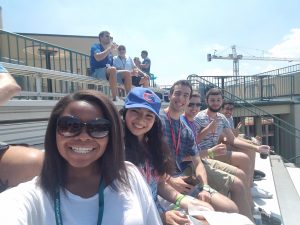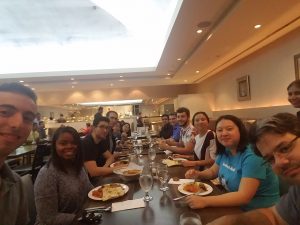Hello! I’m Jordan Fleming, a recent graduate of Northwestern University’s Mechanical Engineering and Environmental Engineering departments. I’ll soon be starting my Master’s with a focus in Water and Energy Engineering. I’ve spent this summer working on the Waggle sensor platform for Ugly Boxes and Ugly Kits (yes, that’s really what they’re called, and yes, they could stand to be slightly more attractive) with Peter Beckman and Rajesh Sankaran. Waggle is an integrated, intelligent, attentive sensor designed and developed at Argonne National Laboratory. The Waggle platform enables distributed sensing through edge computing and on-the-node data storage, a deviation from traditional sensors that simply collect data. While the Array of Things (AOT) node is the official design that is deployed in the city of Chicago, the Ugly Box allows for experimentation and development of both the core Waggle platform and also testing and integrating new sensors. One of the main advantages of the Ugly Boxes is that they are also conducive to use with smaller Arduino or embedded modules like Photon and Electron Particle boards, that can transfer important information via WiFi and cellular communication. The sensors are adaptable to fit the needs of the area and situation in which they are deployed. The nodes can gather data a wide variety of data from conventional environmental parameters like barometric pressure and sulfur dioxide concentrations, to computed inferences through computer vision and machine learning algorithms deployed on the nodes. This makes it possible for the nodes to detect standing water to signal flooding, sky color and cloud cover, and the number of pedestrians in an intersection, among others.
I’ve been streamlining Ugly Box manufacture, plugin creation, and sensor testing and documentation. I’ve enjoyed learning new things like coding in Python and C. The sensors I’m working on will be deployed at Indian Boundary Prarie and the Chicago Botanic Gardens. I’m also working on sensors for Center for Neighborhood Technology’s (CNT) RainReady initiative to prepare ground and surface water level, and sump pump detection sensors in the basements of the homes of individuals living in the Chatham area looking to prevent residential flooding. Flooding is an important problem to address because it causes serious health problems and property damage. I’ve been testing sensor interfaces with the Ugly Box setup to ensure reliable quality in a variety of environmental conditions. In order to ensure these sensors can be used in homes, or anywhere really, I’ve been working on a Python script for publishing sensor data from Ugly Box, Photon, and Electron to the Waggle cloud, “Beehive”, a platform where data can be manipulated and analyzed. Creating an open-source system for sensor deployment will further the goal of extensibility, ease of use and adaptability. These endeavors align with the common principles of modularity in the intelligent, cloud computing, and urban-sensing Waggle platform.
The variety and quantity of data collected by the AoT nodes and Ugly Boxes have implications for policy improvements in many arenas, including public health, urban planning, urban heat insland effect quantification, and flood mapping. Additionally, groups like Chi Hack Night, composed of civically-focused students and professionals in the community who work with the City of Chicago’s open source data, will be better able to serve the community as a result of locality specific data. Capturing the pulse of the city through the AoT nodes and Ugly Boxes will increase Chicago’s operation efficiency, and improve the quality of life of its residents.
I’ve had so much fun this summer. Getting to know everyone in the office, meeting interns from other schools, and exploring different research career paths has been great. When the Waggle team isn’t working, you can find us at Wrigley field or an Indian buffet. Employees who dine together, stay together.


